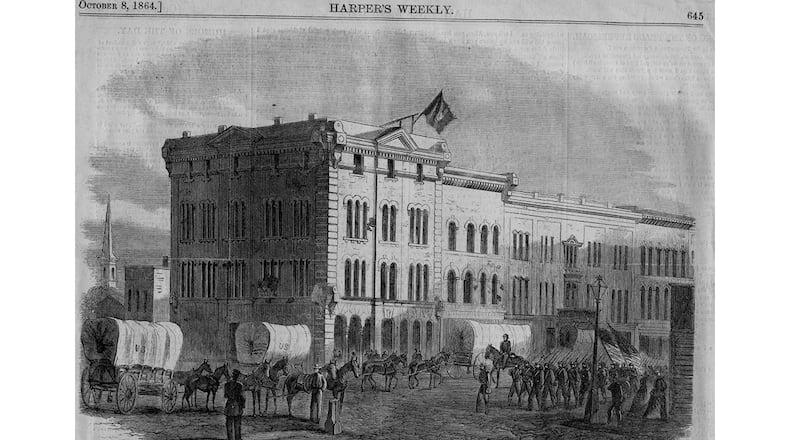When was Atlanta overrun by Yankees and carpetbaggers? The better question is, when was it not?
It was a New Hampshire native named Col. Stephen Harriman Long who placed the first Zero Milepost at the Western and Atlantic line's new "Terminus", two years before Newton County native John Thrasher would create "Thrasherville" around it. Thrasherville itself would be populated by many Irish laborers familiar with railroad construction.
Still, the decades after the Civil War have been remembered in our Southern hive-mind as being a time of carpetbaggers and "dirty Yankees", as Scarlett O'Hara referred to them (she herself being of Irish descent).
Did the carpetbagging Yankees really rain down on Atlanta like a plague of locusts after the war? There's one way to find out.
Let's play Spot the Yankee
Beginning in 1850, the U.S. Census regularly asked residents what state, territory or country they were born in. Starting in 1870, this information was reported at the county and city level, giving us a snapshot every 10 years of who was truly from around here. That doesn't give us a good pre-War picture, but it does let us watch Atlanta's meteoric rise in the following decades.
Here's how Atlanta breaks down during those years (the 1870 report gives Fulton but not Atlanta numbers).
““
* Includes North Carolina, South Carolina, Virginia, Alabama and Tennessee. Virginia count also includes West Virginia. This note applies to 1870 data only.
As the charts above show, Atlanta's population growth from 1870-1900 was fed more by Southern states, with people from non-Southern states accounting for only 5-6% of residents.
A few caveats: Remember that these figures don't truly represent migration. They indicate where residents said they were born, not where they recently moved from. These figures also don't capture the traveling businessmen and salesmen who pass through town and don't put down roots, a trait for which Atlantans have always been famous.
For that reason, it's tempting to treat the 5-6% of non-Southerners as an undercount. Itinerant salesmen must have been passing through in large numbers, right? Perhaps, but look how many Georgians and Southerners were driving the population growth at the same time. It's reasonable to assume that those itinerant businessmen were also coming from Savannah, Macon and Birmingham.
So how many Yankees is too many?
Atlanta's rise from the ashes during those post-War decades was indeed remarkable, but its growth was not uncommon for a lot of 19th Century boomtowns across the country. Cities like Denver, Dayton, St. Paul and Nashville--all close to Atlanta's population at the time--experienced similar growth, if not more. And where were their residents from? Let's look at 1880:
When it comes to carpetbaggers, Atlanta had nothing on the western boomtowns. Atlanta's breakdown looks similar to Nashville's, another up-and-coming Southern city, where 73% of its population was born in Tennessee.
These Census figures can't tell the full story, but they do paint a picture different from the one that lingers in our Southern mythos. Atlanta certainly suffered more than most cities at the end of the Civil War, but its postwar rise was in tandem with many other U.S. boomtowns, and its growing population was fed more by Georgians and other Southerners than by those dirty Yankees.
About the Author
Keep Reading
The Latest
Featured




